Early History of the New York Watch Company: Part 14 – The Panic of 1873 and Fall of the New York Watch Company

Frank Leslie’s Illustrated Newspaper
During the early 1870s, the New York Watch Company found success with a new line of 18-Size full-plate movements that were thriving in the market.
A report published in the August 30, 1872 issue of the Boston Daily Evening Transcript revealed the company had sold nearly $200,000 of products during the past six months and was finishing 50 watches per day. At the time, the company had ambitions to manufacture 2,000 movements per month by enlarging the factory.

Friday, Aug 30, 1872
A brief report published in The Daily Evening Traveller also suggested the company aimed to be bigger than the Waltham factory within ten years.

Friday, Aug 30, 1872
In November, despite working at full force with 175 employees, the company was struggling to keep up with incoming orders.

Wednesday, Nov 27, 1872
As a result of the vibrant activity, the company leadership began exploring ways to fulfill the increased demand.
The first factory expansion was to the dial department, as indicated in a report published in the December 14, 1872 issue of The Commercial Bulletin. The report also noted that a new stem-wind model was being developed at the factory.

Saturday, Dec 14, 1872
In May 1873, the company approved plans to expand the factory by adding a new three-story wing to the existing structure, aiming to increase production from 50 to 75 watches per day.
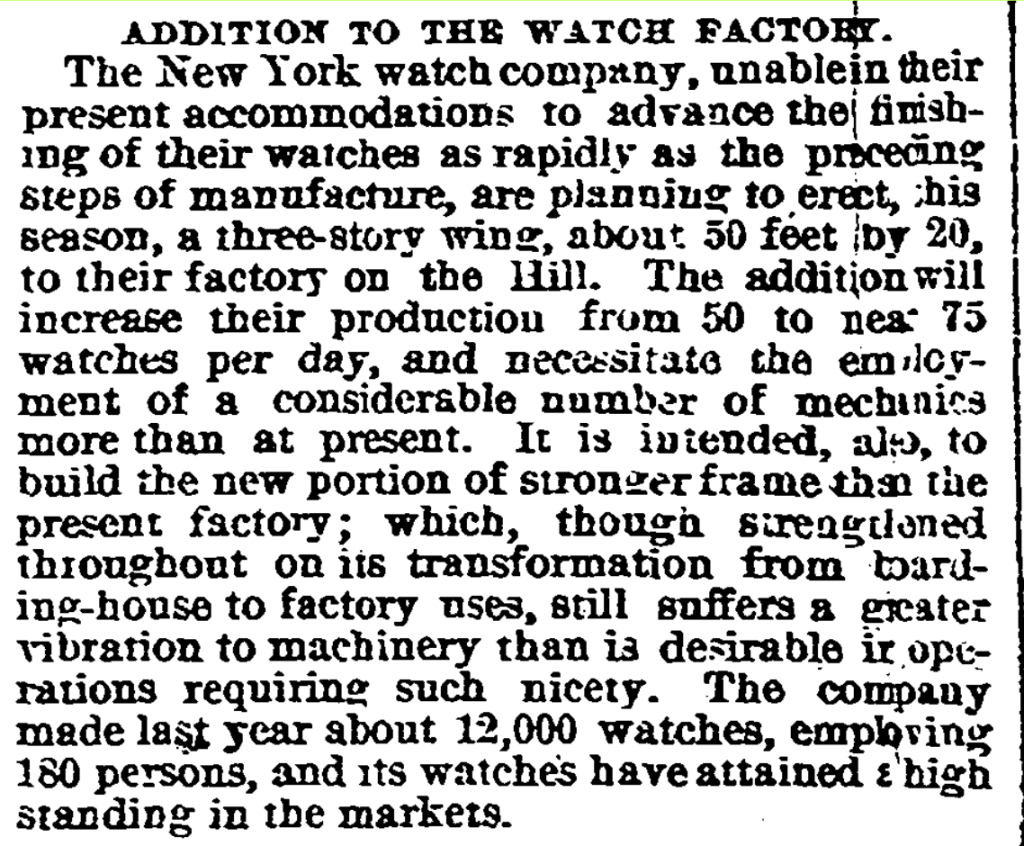
Tuesday, May 20, 1873
In June 1873, the Springfield Republican reported the factory would be closed for a month during July to construct machinery for the new stem-winding watch. It is unclear if the closure was related to a slowdown in the factory or if this was solely to refit the factory for new production.
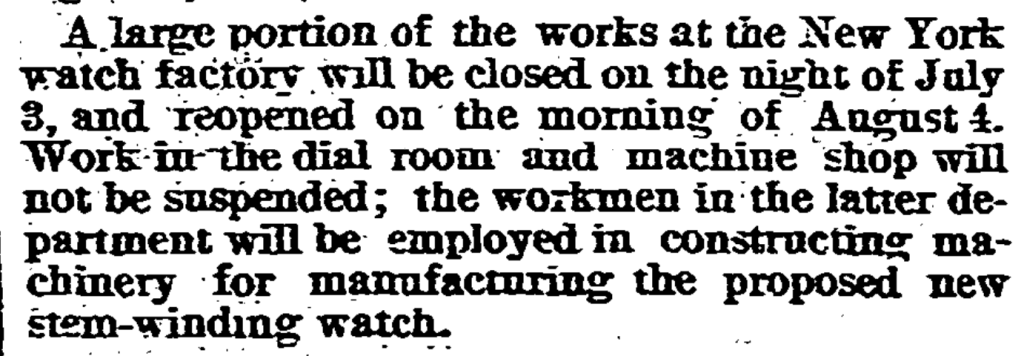
Monday, Jun 30, 1873
The first sign of financial difficulty for the New York Watch Company came in October 1873, when the company failed to fulfill its payroll obligations.

Wednesday, Oct 15, 1873
This sudden downturn came amid the economic collapse referred to as the “Panic of 1873.”
The next month, the New York Watch Company furloughed 75 employees in an attempt to catch up on payroll obligations. However, the newspaper reports of the situation were not optimistic about the outlook.

Wednesday, Nov 26, 1873
Despite the dire circumstances, the strategy appeared to work initially. By February 1874, the factory had resumed some operations and aspired to have the factory fully operational by April.

Monday, Feb 02, 1874
Saturday, Feb 14, 1874
However, this optimism was quickly snuffed out by the harsh reality of the strained economy, and the company was forced to reduce wages by 10-30%.

Saturday, Feb 28, 1874
In 1875, in a desperate attempt to generate sales, the New York Watch Company appointed Wales, Rogers & Co. as general sales agents of the entire factory output.
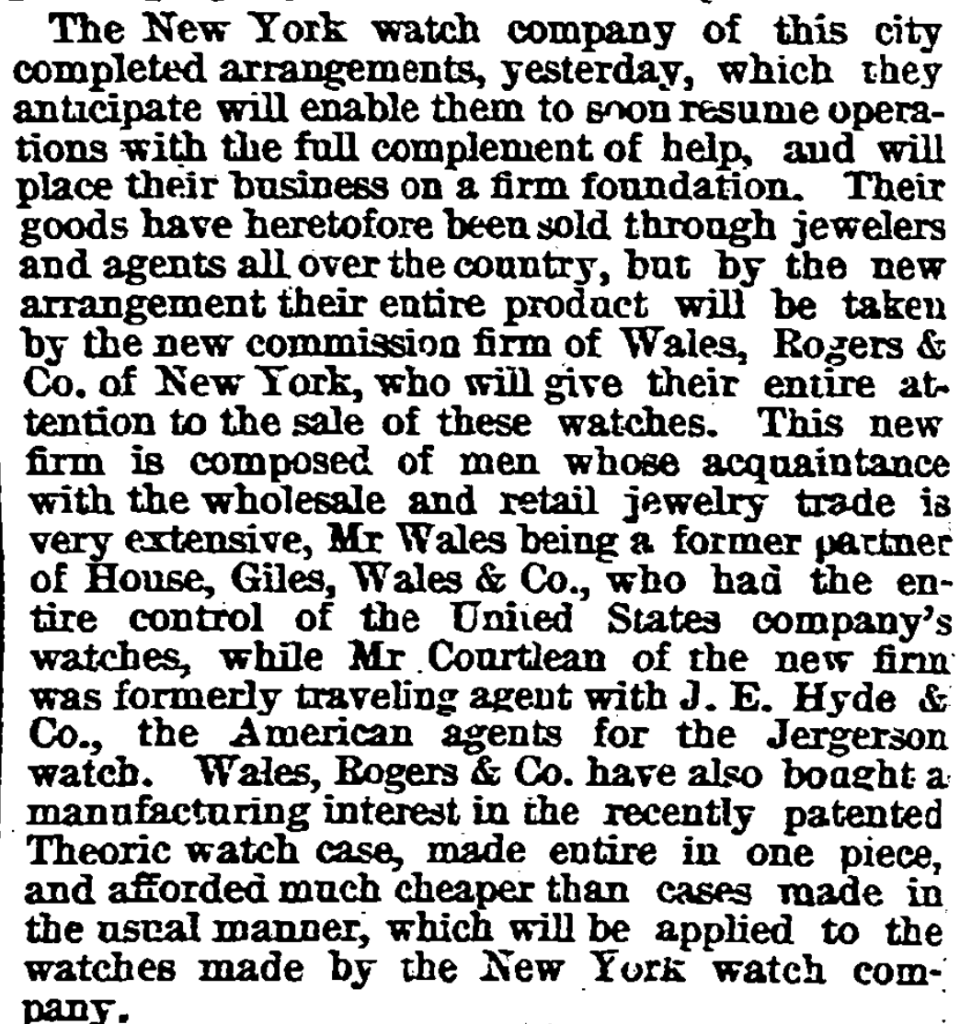
Saturday, Jan 30, 1875
Despite the valiant efforts, the company’s financial situation continued to decline. The March 6, 1875 issue of The Commercial Bulletin published a list of Massachusetts-based manufacturing companies.
The list included the financial figures of the New York Watch Company – a capital stock of $145,600, real estate worth $44,724, assets worth $371,166, and liabilities amounting to $287,116.

Saturday, Mar 06, 1875
The work at the factory slowed dramatically during the Panic of 1873 and the resulting economic depression. By July 1875, employment at the factory had decreased to less than 50 people, and business was “extremely dull.”

Wednesday, Jul 21, 1875
Finally, in April 1876, the company was forced to shut down the factory.

Friday, Apr 14, 1876
Behind the scenes, the leadership struggled to find a way to revive the company once again. Proposals were even entertained to sell the machinery to a watch company in Switzerland to manufacture American-style watches.
In August 1876, the New York Watch Company was reorganized as the New York Watch Manufacturing Company under the leadership of Aaron Bagg as president and Homer Foot as treasurer. J.C. Perry continued his position as superintendent, and Charles D. Rood was appointed sales agent.
The new plan also instituted wages for workers that were approximately a third less, a necessary change due to the strained market.
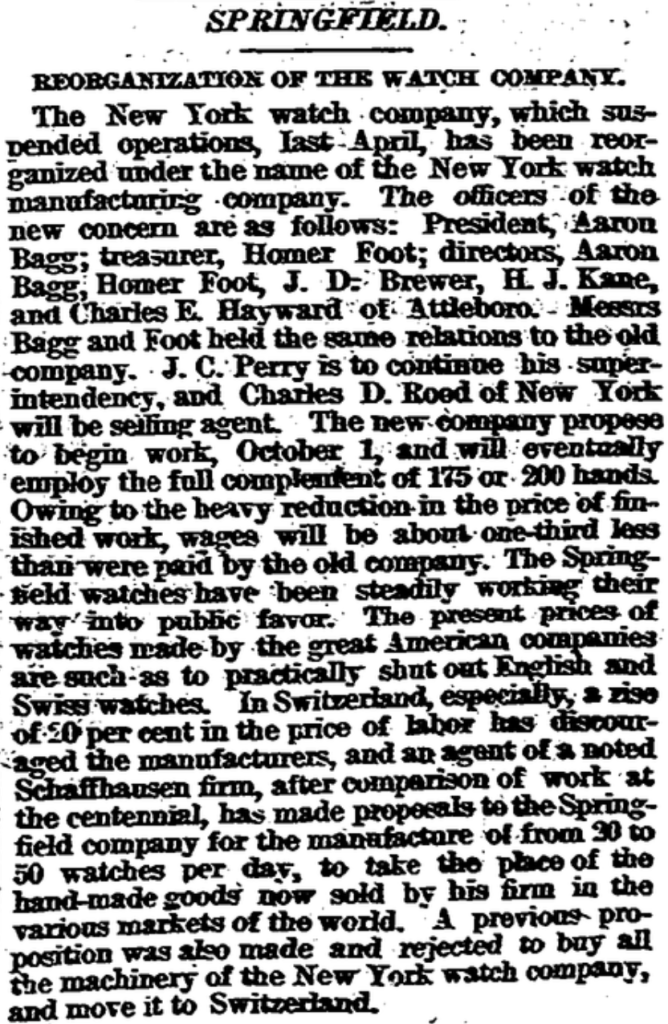
Saturday, Aug 26, 1876
The restructuring was enough to save the company from total failure while it recovered from the economic downturn. This move represented a half-step closer to a new identity as the Hampden Watch Company.



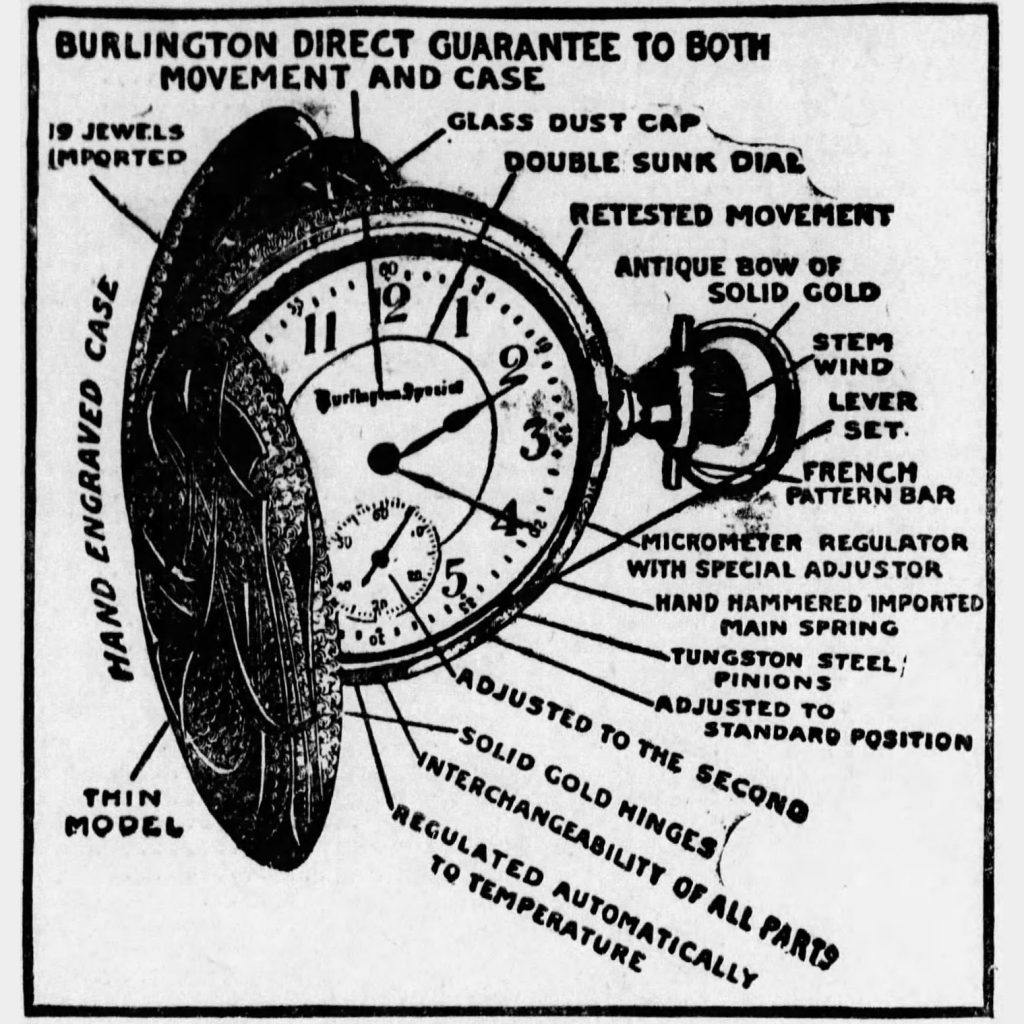
One of the most interesting articles Nathan has put up… What a crying shame the economic down turn and the impact of once up coming manufacturer of watches to be hit with economics of the great depression…. I felt depressed reading what could have been, as so many hit financial problems. Great information Nathan..and as always Thanks!!
This has been a big fall for the whole world